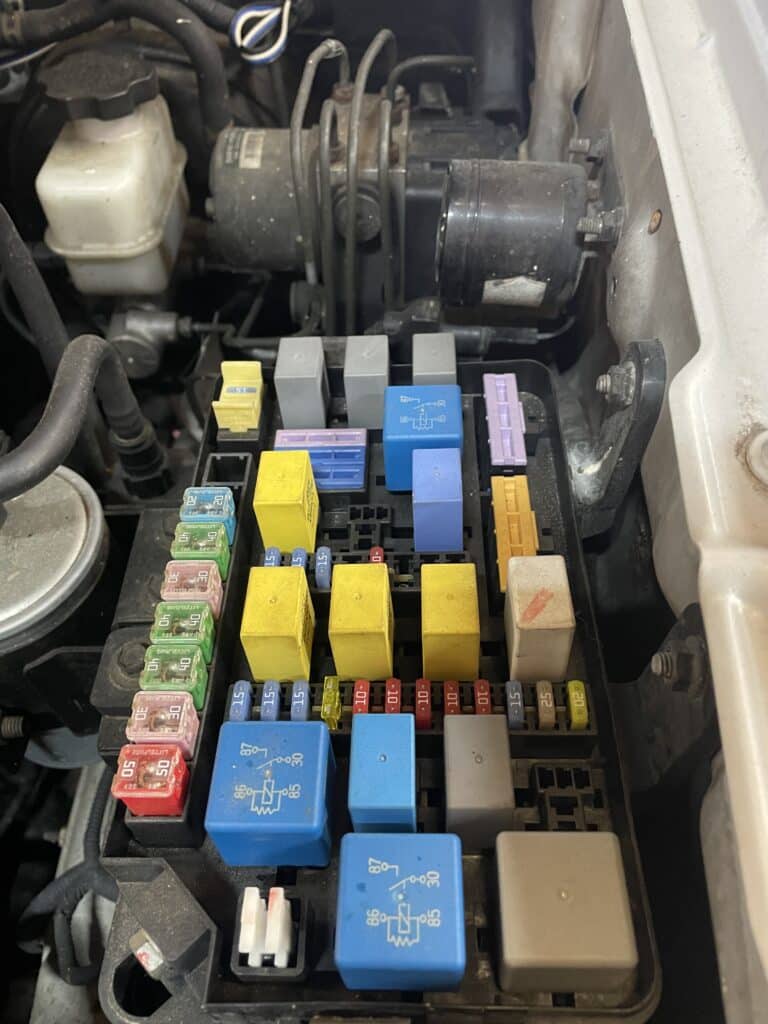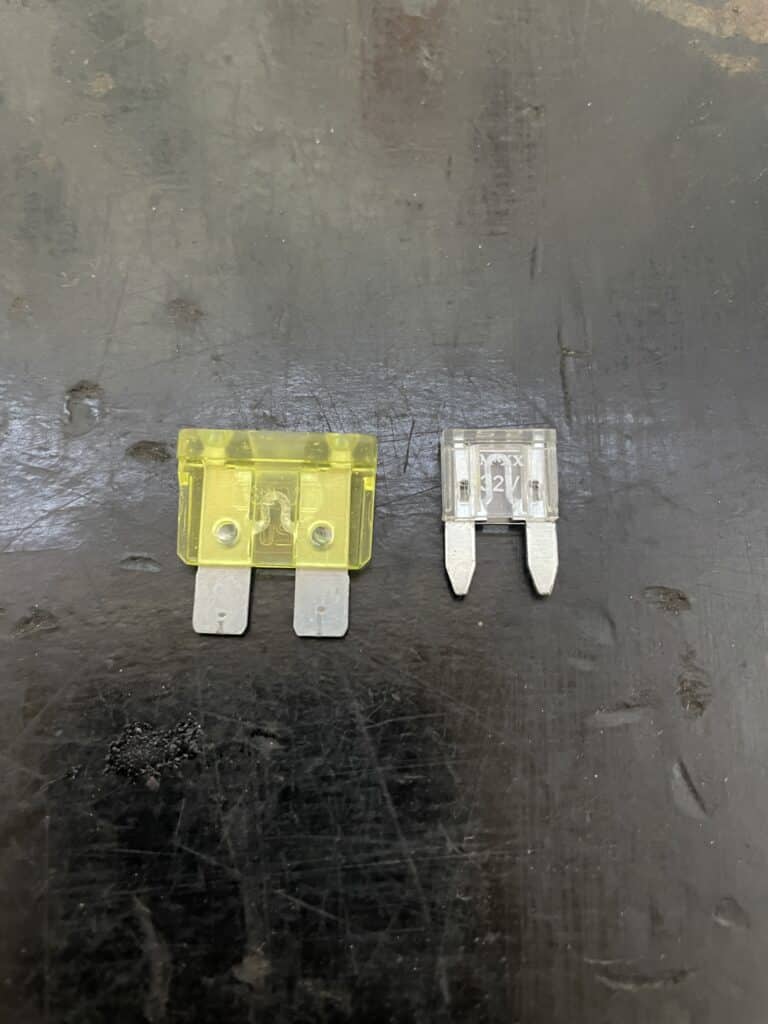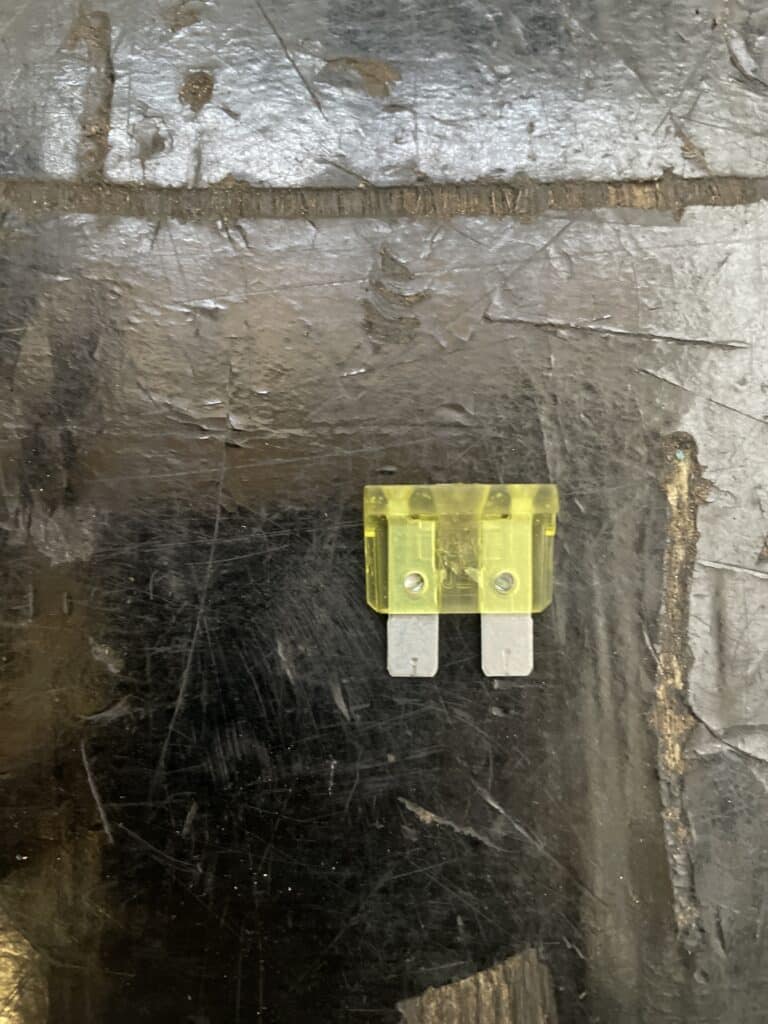Function and task of an electrical fuse
A car has various electrical components and systems installed, all of which need to be safely powered. Fuses are used to protect these circuits from overload and short circuits. A fuse is basically an overcurrent protection device that breaks the circuit if the current is too high to prevent damage to the electrical components. A metal wire or metal plate is installed inside the fuse; the thicker the metal, the more ‘amps’ (current) the fuse can withstand. If the permissible current for the fuse is exceeded, the metal will burn out and the circuit will be disconnected.
Fuses in cars come in various shapes and sizes depending on the type of vehicle and the specific requirements of the electrical systems.

The fuses in the car are usually located in a central location such as the fuse box where they are easily accessible. In many cases, the fuses are color coded and numbered to make it easier to identify the corresponding circuits. If a fuse blows, it is important to replace it with one of the same current rating to ensure optimal functioning of the electrical systems. Where exactly the fuse box is installed in the car, or the exact assignment diagram of the fuses, can usually be found in the vehicle’s operating instructions.
In addition, it is often the case that the fuse box itself contains a paper card on which the assignments of the fuses are shown.
A defective fuse in the car can lead to various problems, such as failure of headlights, malfunctioning electrical systems or even engine failure. It is therefore important to identify defective fuses early and replace them. Testing fuses in cars is a relatively simple task that does not require any specialized expertise.
(There are usually two different types of fuses in a car. There are small and large fuses as shown in this picture)

Checking a fuse:
Optical visual inspection:
- Tools/aids: occupancy plan/operating instructions, flashlight
- Test: In order to determine whether the fuse is defective during a visual test, the fuse must be pulled out of the fuse box. Now you can usually see very clearly whether the metal plate is intact or has burned through.
(Pictures of a defective fuse)

Voltage test:
- Tools/aids: assignment plan/operating instructions, multimeter
- Test: This test can be used to determine whether there is current at the fuse or whether the current is flowing through the fuse. As a rule, the plastic on both sides of the fuse is shaped so that you can reach the metal with the measuring tips of the multimeter.
Now set the multimeter to “V” and start the vehicle’s engine. The black cable of the multimeter must be connected to “ground”, i.e. to a bare part of the vehicle such as the car. B. a screw connection of the fuse box. Now go to both ends of the fuse with the red cable one after the other. If both values are the same, the fuse is OK.
Resistance measurement:
- Tools/aids: assignment plan/operating instructions, multimeter
- Test: This test can be used to determine whether the fuse can still conduct electricity. In some cases it is difficult to visually see whether the fuse is still intact or not. The fuse should also be removed for this test.
The multimeter must be set to “Ohm”. Now hold the measuring tips of the multimeter on the plug contacts of the multimeter. If the resistance value is up to a maximum of 1 ohm, the fuse is intact, the resistance value is very high or “OL (Open Line)” appears on the multimeter display, the fuse is defective.
(Fuse in order)
(Fuse defective)

